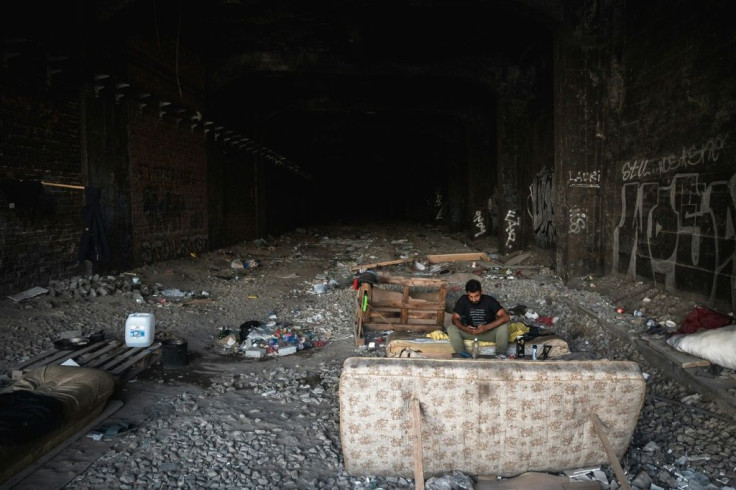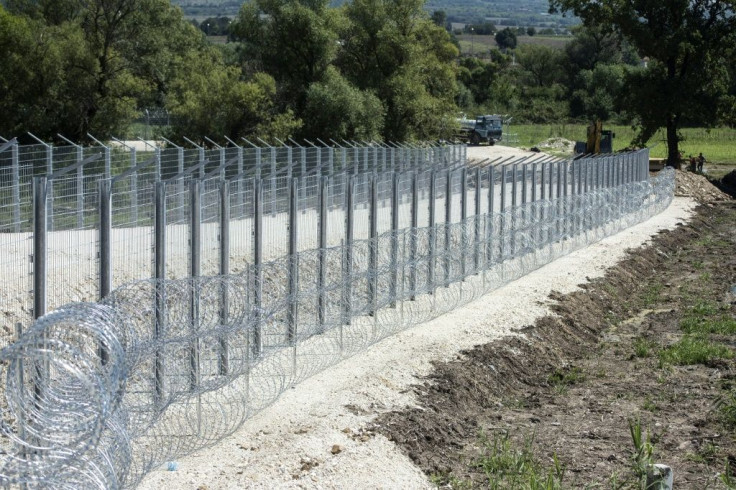Five Years On, Balkans Still A Road Of Hope For Migrants

With a smart black sweater and clean-shaven face, Younes Qermoua recalls his first attempt to reach Europe five years ago, at the peak of the continent's refugee crisis.
Half a decade later, the world's attention has moved on but the 35-year-old Moroccan is back on the Balkan route, where traffic is picking up this summer even amid the coronavirus pandemic.
After years of bouncing back and forth across the region in attempts by boat, on foot and even tucked above the wheel of a truck, Qermoua's goal remains unchanged.
"I want to live in a country where I can work and get paid for my work, a country where the laws are respected, where there are hospitals, schools," he told AFP in a migrant centre outside Sarajevo, where he is catching some rest before continuing westward towards EU member Croatia.
In 2015, hundreds of thousands of migrants and refugees traversed the Balkans in weary columns, reaching the peninsula through Greece before trundling northwards.
The route was officially shut down under a 2016 deal between Brussels and Turkey.
But in reality, the movement has never stopped.
While the numbers are lower, tens of thousands still flow through the region annually, escaping war and poverty in Asia, the Middle East and North Africa.
Qermoua, who in his first attempt never made it past Greece, is now making progress on a new route that bends west through Bosnia to avoid tighter controls in Hungary, which built a border fence in 2015.
He joins a summer surge of travellers in the Balkans who are on the move after the loosening in early spring of virus lockdowns, when movement was curtailed and some migrant camps were sealed shut.
In June, the Western Balkans was the most active migratory route into Europe, while the first six months of 2020 saw a 73-percent increase in migrants detected at the borders compared to the same period last year, according to Frontex, the EU's border police.

For Lence Zdravkin, whose front porch looks out onto a railway track slicing through the centre of North Macedonia, there is a sense of deja vu.
When huge numbers of people started passing her doorstep during the crisis five years ago -- following the train tracks as a guide -- she became a local hero for collecting food, clothing and other donated aid for them.
This summer, the 53-year-old sits on her balcony with a bright light to help spot travellers who are again passing regularly, though fewer donations are coming in as the world's attention is focused on the pandemic.
"The refugees are facing the same sufferings, with the same journeys, with all the problems that accompany them from the beginning of their travel to its end," she told AFP.

The warm months always bring a new tide of migrants but this summer the numbers have "drastically increased", she said.
While North Macedonia built a barrier on its southern border with Greece in 2015, migrants can still slip in through a mountainous region where the barrier doesn't reach, said Jasmin Redjepi, from the Skopje-based NGO Legis.
Many then take the railway tracks, often hopping onto the links between the carriages of freight trains barrelling past.
According to data from the UN's refugee agency, arrivals in North Macedonia over the past six months have already topped last year's figures for the same period, reaching nearly 23,000.
"They want to cross during this period and get to Europe because they do not want to find themselves in autumn and winter with closed borders and quarantines again," Redjepi told AFP.
Some stretches of the Balkan route are more complicated than they were five years ago, with migrants forced to cross difficult terrain to avoid border barriers and boosted patrols.
Reports of violent pushbacks at the frontiers have also become commonplace, with migrants describing beatings, theft and other abuse at the hands of police.
After crossing Turkey's land border with Greece, Qermoua walked some 700 kilometres (435 miles), mostly alone he says to avoid detection, through Albania and Montenegro to reach Bosnia.
But the next leg of his journey may be even tougher as the country's northwest -- which flanks the border with Croatia -- once again becomes a dead end.
Local authorities have started blocking the entry of new arrivals to the region, where official camps are filling up and thousands more migrants are sleeping rough in abandoned homes and factories.
While locals were initially receptive to the foreigners, some are now protesting against the influx, calling on authorities to "clear" the streets.
Local mobs have recently stopped buses and pulled off migrants and asylum seekers, leaving them stranded.
The mood has also soured in Serbia, where right-wing groups have become more vocally anti-migrant in recent years.
In a park near Belgrade's bus station, scores of foreigners gather on the grass, a common meeting point to link up with smugglers.
Many bear the same wounds from thwarted attempts to cross the Croatian, Hungarian or Romanian borders: gashes on their lower legs and smashed mobile phones they attribute to violent police expulsions.
After five years stuck in the Balkans, Arif, a soft-spoken 24-year-old from Pakistan, is one of those whose hope is fading.
"My mother and father keep calling me to come back home, and now I tell them, as soon as I get my papers, I'll be back".
© Copyright AFP {{Year}}. All rights reserved.





















